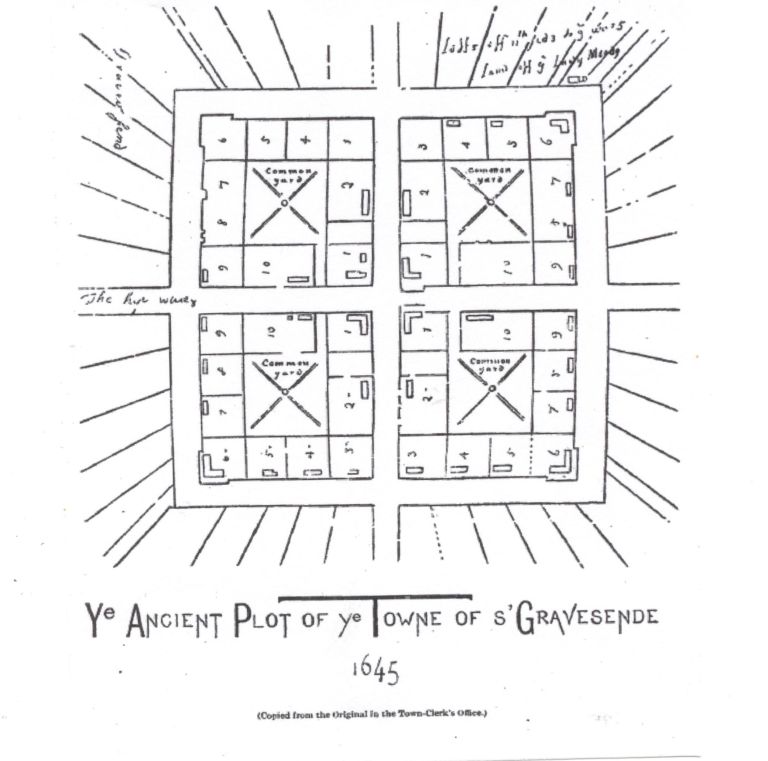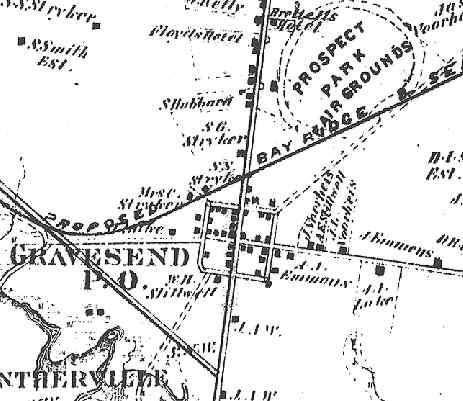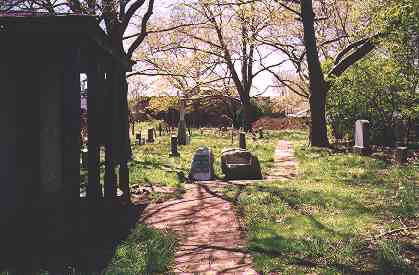GRAVESEND
1645

In 1643, there arrived in New Amsterdam Lady Deborah MOODY with her son
Sir Henry and some followers who had fled from New England because she and the
authorities had differed on the subject of infant baptism.
To rid himself of these, self-invited guests, Director-General William KIEFT
gave them a tract of land on Long Island on which to settle and make their homes.
He named it "s'Gravensande", some say in memory of his home on the Maas River
in Holland. Others claim it was so-called, meaning "the Count's beach", for
Sir Henry. But still others claim it was because Lady Deborah came from Gravesend
in England.
When they were beginning to build, the English were attacked by Indians who
were on the warpath because of KIEFT's unjust treatment, and after several attacks,
they were forced to abandon their land and seek safety in Amersfoort.
When peace was restored in 1645, they went back to s'Gravensande and laid out a
carefully planned town. Their patent, received in December, 1645, included Coney
Island and two smaller islands.
Tradition tells that Sir Henry predicted that s'Gravensande in time would be
the world's greatest seaport.
After, New Netherland was surrendered to the English, the town was called
Gravesend and was made the seat of justice for the West Riding of Yorkshire. Its
first public building, "the sessions house," was erected in 1667. This was sold
to the citizens of the town when Flatbush was made the county seat and in it were
held the services of the Dutch Reformed Church which was organized about 1690.
GRAVESEND Map of 1873
 OLD GRAVESEND CEMETERY
OLD GRAVESEND CEMETERY

Next Chapter..VAN SICKLEN
DUTCH Houses..Index Main
Return to TOWN Index Main
Return to BROOKLYN Index Main


 OLD GRAVESEND CEMETERY
OLD GRAVESEND CEMETERY
